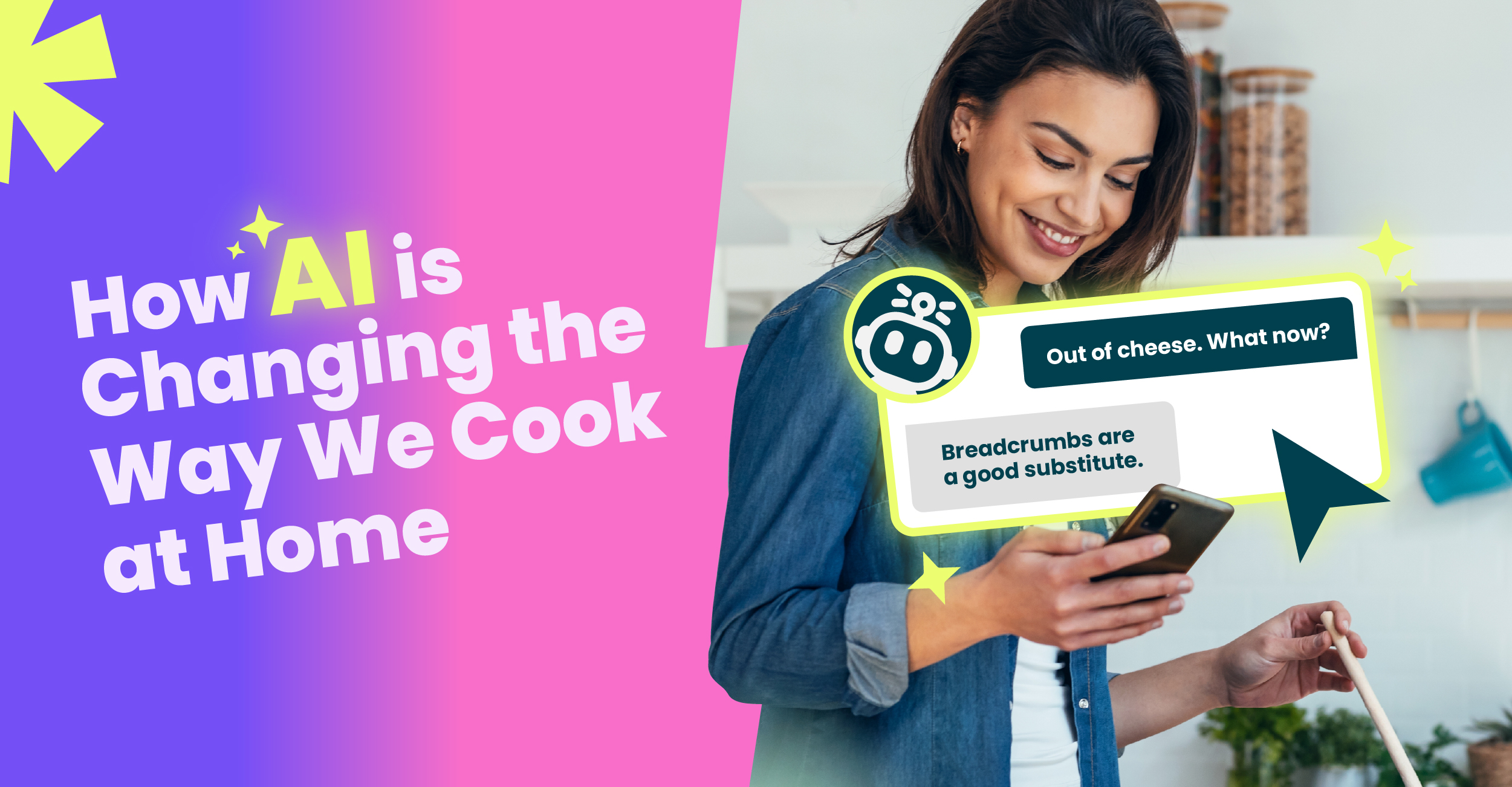
Artificial Intelligence isn’t just powering cars and chatbots, it’s transforming how we cook dinner. In fact, the global recipe app market, where many AI cooking tools live, grew to USD 5.80 billion in 2024, projected to reach USD 6.41 billion by 2025 with a 10.5 % CAGR, and is on track to exceed USD 14 billion by 2033, according to a report by Straits Research. Meanwhile, North America is projected to lead this surge, with the market expected to reach USD 844 million by 2034, growing at a strong 12.7 % CAGR, as highlighted by Market Scoop.
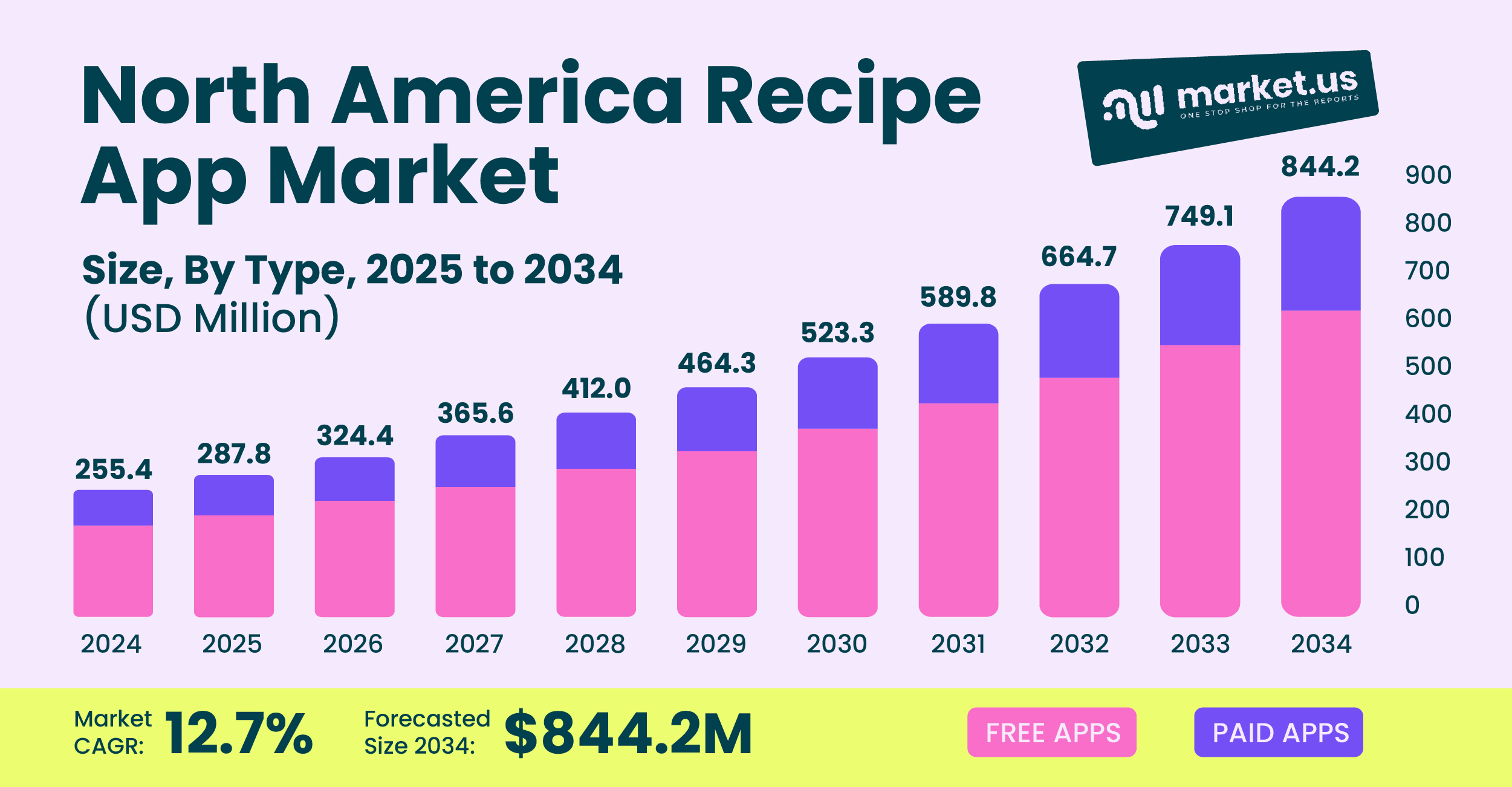
For food brands, marketers, and tech innovators, this shift is critical. For one thing, AI is now bridging the gap between what home cooks want to eat and what’s actually in their fridge.
Gone are the days of one-size-fits-all recipes. Today’s AI-powered solutions offer personalized, instant, and adaptive cooking suggestions. Whether it’s a time-saving dinner idea or an allergen-free swap, AI cooking tools are helping households move from static meal planning to dynamic food experiences tailored to each user.
In this article, we’ll explore the various ways in which AI technologies are changing home cooking experiences and making planning, shopping and cooking more personalized, more convenient and even more sustainable.
AI recipe tools can generate meal ideas based on ingredients you already have, dietary preferences, or time constraints. Users simply input what’s available in their kitchen, and the AI does the rest. Learn more about how shoppable recipe pages simplify cooking decisions. It even adjusts recipes for portion size or cooking difficulty.
AI can analyze flavor profiles and cuisine trends to suggest ingredients that pair well together. This boosts creativity in the kitchen and cuts down food waste by turning overlooked pantry items into the stars of your next dish.

Over time, AI tools learn from user behavior, what you cook, what you skip, and what you love. They offer meal suggestions based on seasonal preferences, mood, and even your health goals. See how SideChef helps support healthy eating habits at home.
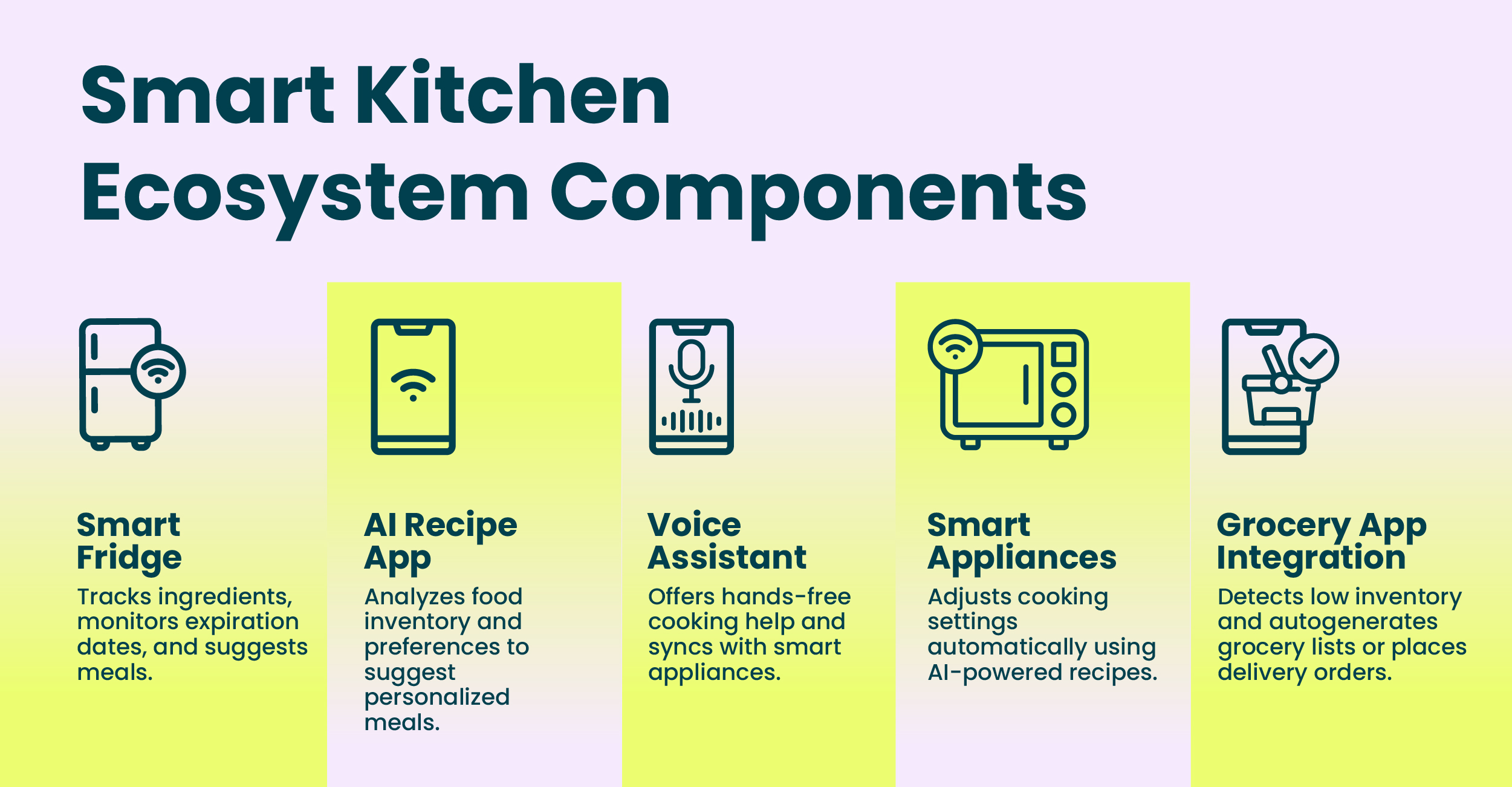
Smart assistants like Alexa or Google Home now guide users through cooking steps hands-free, making it easier to multitask in the kitchen. AI-enabled appliances can sync with recipes to auto-set oven temperatures or notify users when to stir, improving accuracy and timing for better results.
Smart fridges can monitor their contents and suggest meals before ingredients expire, helping reduce food waste and save money. With AI integration, these systems connect fridge inventories to recipe databases, offering timely, personalized meal ideas based on what's still fresh.
At SideChef, we believe technology can empower smarter choices in the kitchen to fight food waste. We've explored various pantry management features and developed a “My Pantry” experience within the SideChef app, enabling users to cook with what they already have. Users can prefill their digital pantry with common staples like salt, pepper, and butter, then choose how to track additional items. Whether through manual entry, barcode scanning, grocery account syncing, or using a camera to scan ingredients, we've tested multiple input methods to help users get recipes that closely match their current inventory.
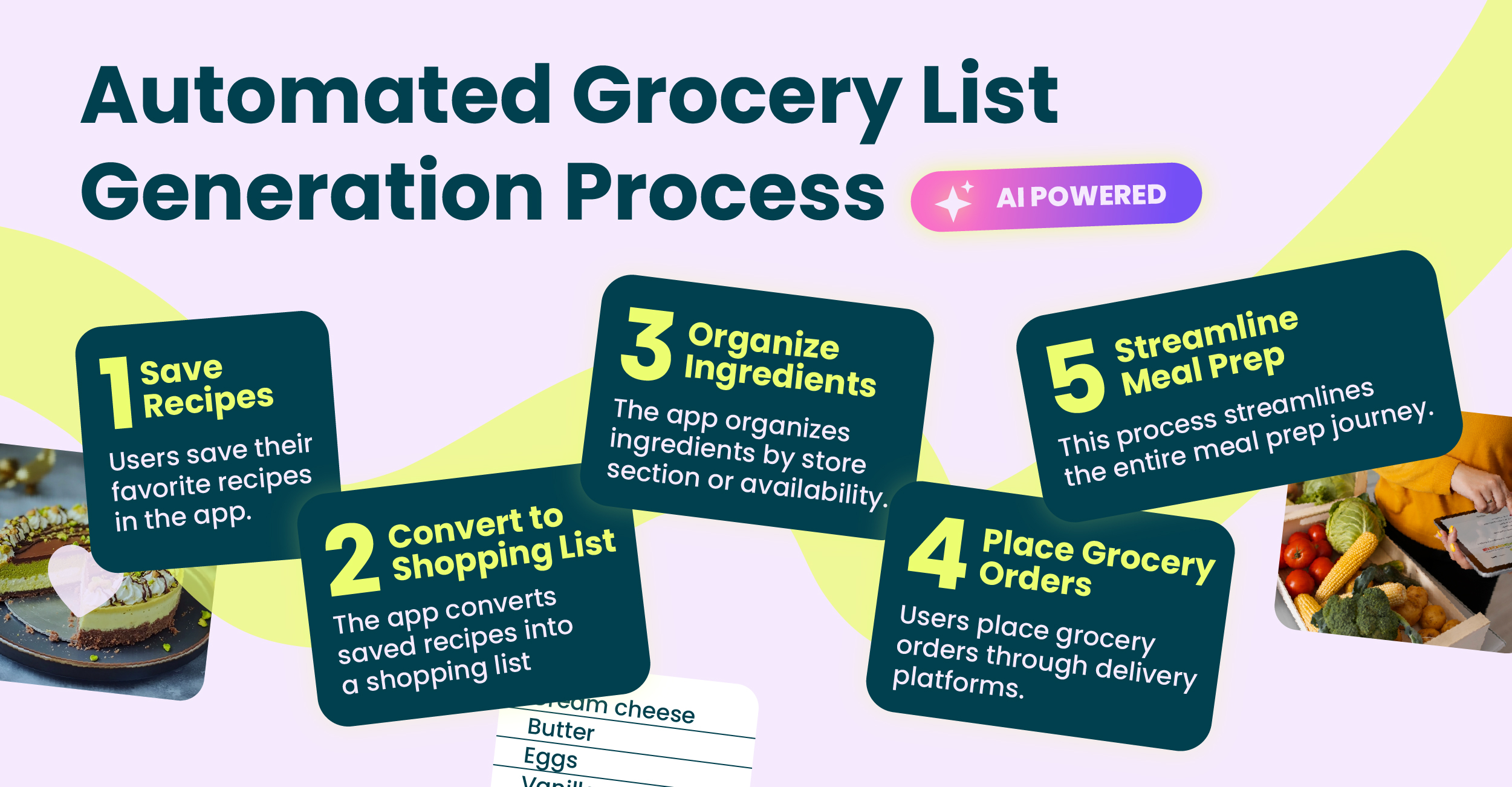
Some AI-powered cooking apps go beyond just offering recipes—they support the entire meal prep journey, from planning to pantry. These apps can:
By automating these steps, AI apps simplify the cooking process end-to-end—reducing the friction between meal inspiration and execution.
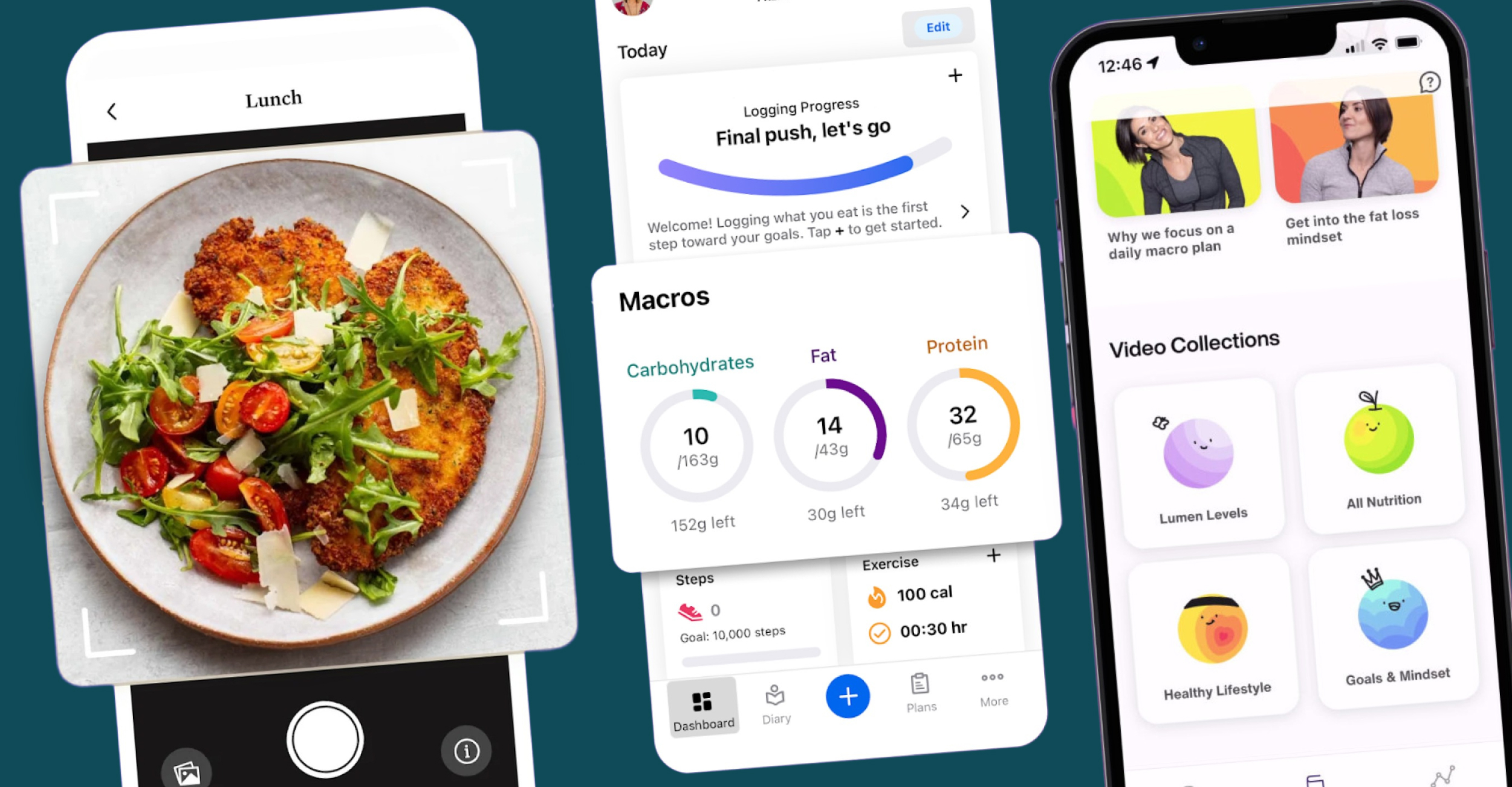
AI has incredible potential to transform the home cooking experience. We're spotlighting four key ways it can assist in the kitchen—making meal planning, cooking, and food management smarter and more efficient. For a more extensive list, explore all of SideChef’s AI experiences to see how AI is helping home cooks every day.
AI tools narrow the “what’s for dinner?” dilemma by offering curated choices based on user’s current needs and past behavior. This saves time, eliminates guesswork, and creates a smoother mealtime routine, especially for busy households.
By adjusting recipes to match skill levels or available tools, AI helps users grow in the kitchen without fear of failure. It empowers experimentation by reducing the pressure to get everything right on the first try.
Many AI-powered cooking apps offer features that promote better health outcomes. These include dietary tracking tools, macro and calorie counting, and personalized recipe recommendations that align with popular plans such as keto, vegan, or low-FODMAP. With these capabilities, users can more easily meet their fitness goals, navigate dietary restrictions, and manage chronic health needs through everyday meals.

Coordinating multiple dishes for a meal can be challenging, especially when timing is crucial. Smart recipe technology simplifies this process by combining the steps of different recipes into a single, organized timeline. Users can select multiple dishes and set a target mealtime, after which the system generates a step-by-step guide that ensures everything is prepared and ready at the right time. This feature helps streamline meal preparation, particularly for events like dinner parties or holiday gatherings - and is a unique experience SideChef has been working on for many years, now being accelerated with the advancing AI tech.

SideChef delivers daily meal ideas based on user preferences, dietary needs, and even the cookware users have on hand. Its AI adapts over time, learning from cooking habits and taste profiles to refine suggestions. This ensures every recommendation is not only relevant but also practical and achievable with what's already available at home.
Using image recognition or inventory input, SideChef helps users discover recipes that match what's already in their fridge or pantry. This reduces the stress of last-minute planning and turns overlooked ingredients into delicious, purposeful meals—minimizing both food waste and grocery spend.
SideChef connects inspiration with action. Users can instantly add ingredients from a recipe to a grocery cart for home delivery or pickup. This integrated shopping flow shortens the gap between planning and execution, making it easier for users to follow through on their mealtime decisions without missing ingredients. The matching is highly accurate due to integrated AI-powered matching technology that's continuously being improved and QA’d to ensure up to 99% matching.
Kroger launched Chefbot, an AI-powered assistant that lets users snap a photo of their ingredients and tweet it to @KrogerChefbot. The bot analyzed over 2,000 ingredients and matched them to 20,000+ recipes, offering fast, personalized suggestions right on Twitter. This smart tool drove engagement and linked directly to Kroger’s e-commerce experience, as highlighted in a case study by The PR Net and further explored on SideChef's platform.
Knorr used AI to recommend recipes based on users’ Instagram feeds. The “Eat Your Feed” campaign analyzed photos and captions to serve up meals that matched the content, like hearty soups after winter travel posts. It was a creative way to connect brand engagement with real-life moments, as showcased in SideChef’s roundup of top AI cooking campaigns.

Will AI soon anticipate meal needs with remarkable accuracy, drawing from past eating patterns, dietary preferences, and family routines? It could consider variables like the day of the week, typical grocery inventory, school schedules, and even seasonal weather changes—offering cozy soup suggestions on cold days or lighter fare when it’s hot out. By synthesizing this data, AI will proactively suggest meal ideas, complete with recipes and shopping lists, well before the "What’s for dinner?" a question arises. This level of foresight will help reduce decision fatigue, minimize food waste, and alleviate last-minute meal planning stress, making daily life smoother and more enjoyable.
Expect a future where your meals are not just about taste or convenience—but finely tuned to your body and mind. Leveraging data from wearables, sleep trackers, and health apps, AI will analyze your biometrics, such as heart rate, blood sugar, stress levels, and sleep quality. It will use this insight to recommend meals that support your current needs—suggesting energizing breakfasts after poor sleep, calming teas during high-stress days, or iron-rich foods if your levels are low. Your mood, schedule, and even workout intensity can all influence what appears on your plate. These tailored food experiences won't just meet dietary goals—they'll enhance well-being and performance in a deeply personal, dynamic way.
We’re headed toward kitchens where your fridge, stove, phone, and grocery store all work in sync to create seamless home cooking. These systems will anticipate your needs, offer real-time guidance, and even automate key steps like grocery shopping or preheating your oven. The future kitchen will function as an intelligent partner, helping users cook with greater ease, efficiency, and personalization.
AI isn’t replacing home cooking. It’s empowering it. From smarter planning to more joyful experimenting, AI recipe tools are changing the game for home cooks and brands alike. Explore the latest in home cooking innovation, and check out more on SideChef’ AI innovations.
Want to explore custom AI recipe integrations or smart meal planning tools? Partner with SideChef to connect with home cooks in innovative, meaningful ways.

